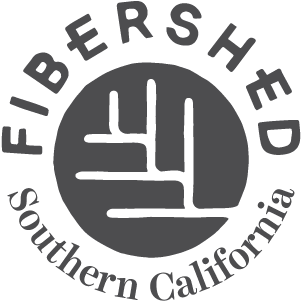Interested in textiles, weaving and dyeing since an early age, Fibershed founder Rebecca Burgess – drawing from the Japanese tradition of sukumo – in 2010 was able to extract indigo from composted leaves of Persicaria Tinctoria. In what was later called the Indigo Project, the indigo dye ended up being used by the Berkeley Art Museum, a Levi’s prototype in collaboration with Fibershed called Grow your Jeans, and in a series of dyeing workshops. Her experiments didn’t end with indigo but included many other native and non-native plant species – i.e. hemp, flax, nettle – investigated and tested locally for their ability to provide beautifully colored natural dyes, as well as for their innate capability to be processed into sustainable, luscious, performing textiles.
Rebecca’s lifelong journey of research, discovery, and connection to her native land in Northern California has brought her in contact not just with centuries’ old traditions of weaving and dyeing a plethora of natural fibers, but with a rich amalgam of people, united by the passion for their ancestral home, their traditions, and the soil that nourishes them and the animals all around them.
With industrial developments throughout all industries, people have become quickly disconnected from the sources of their clothing, as well as from the entire supply chain responsible for bringing fashion to market. This disconnect is, in Rebecca’s eyes, partly responsible for the negative impact the fashion industry has on the planet and our own health.
In her 2019 book, Fibershed, Growing a Movement of Farmers, Fashion Activists, and Makers for a New Textile Economy, Rebecca Burgess reveals the economic incongruity existing between the state of California, rich in prime fiber materials, talent and capabilities, and the almost complete lack of industry being generated by such favorable conditions. Fibersheds are described as place-based textile systems focused on the source of the raw materials, the transparency used in the entire supply chain, and the connectivity among all parts, from skin to soil, back to skin. According to Burgess’s vision, fibersheds are communities with a long history, traditions and cultures that need to be nurtured or reestablished in order for local economies to be sustainably viable.
The book is an incredible mine of data-driven information, compelling stories, suppliers’ contacts, and interesting ideas to draw upon for your sustainable fashion wardrobe.
You can order a copy of Rebecca’s book from our website (click on the SHOP link). While you’re here, please consider joining in as a producer or friend, submitting calendar events, and signing up for the monthly newsletter.




